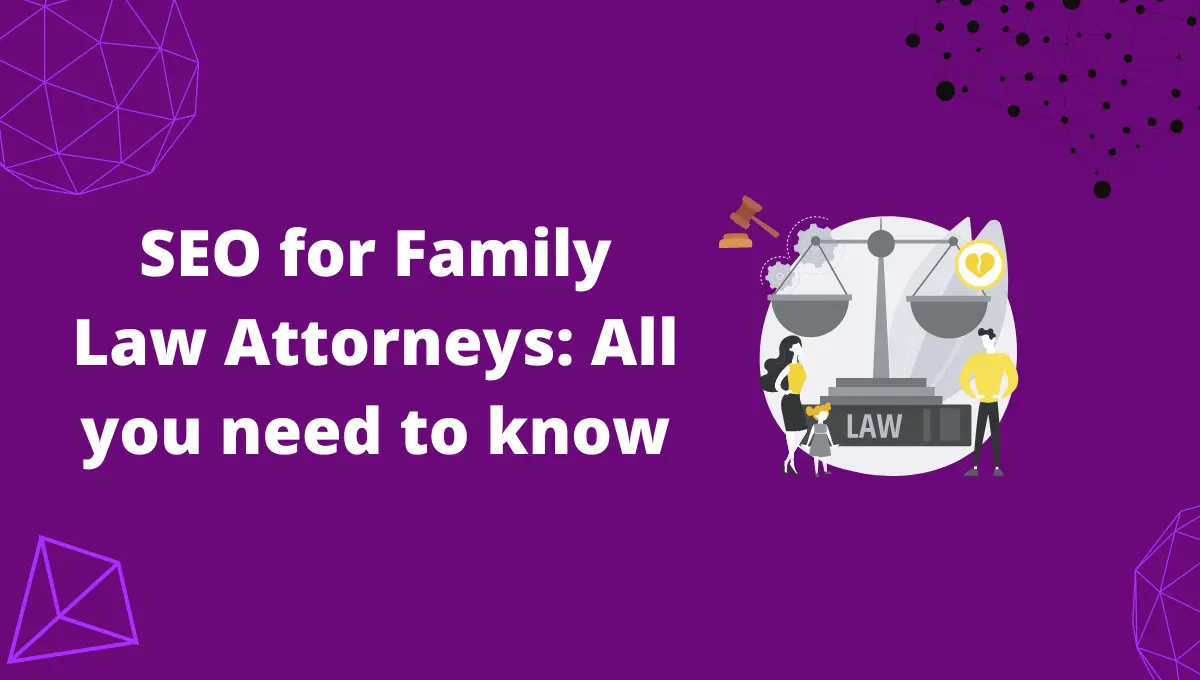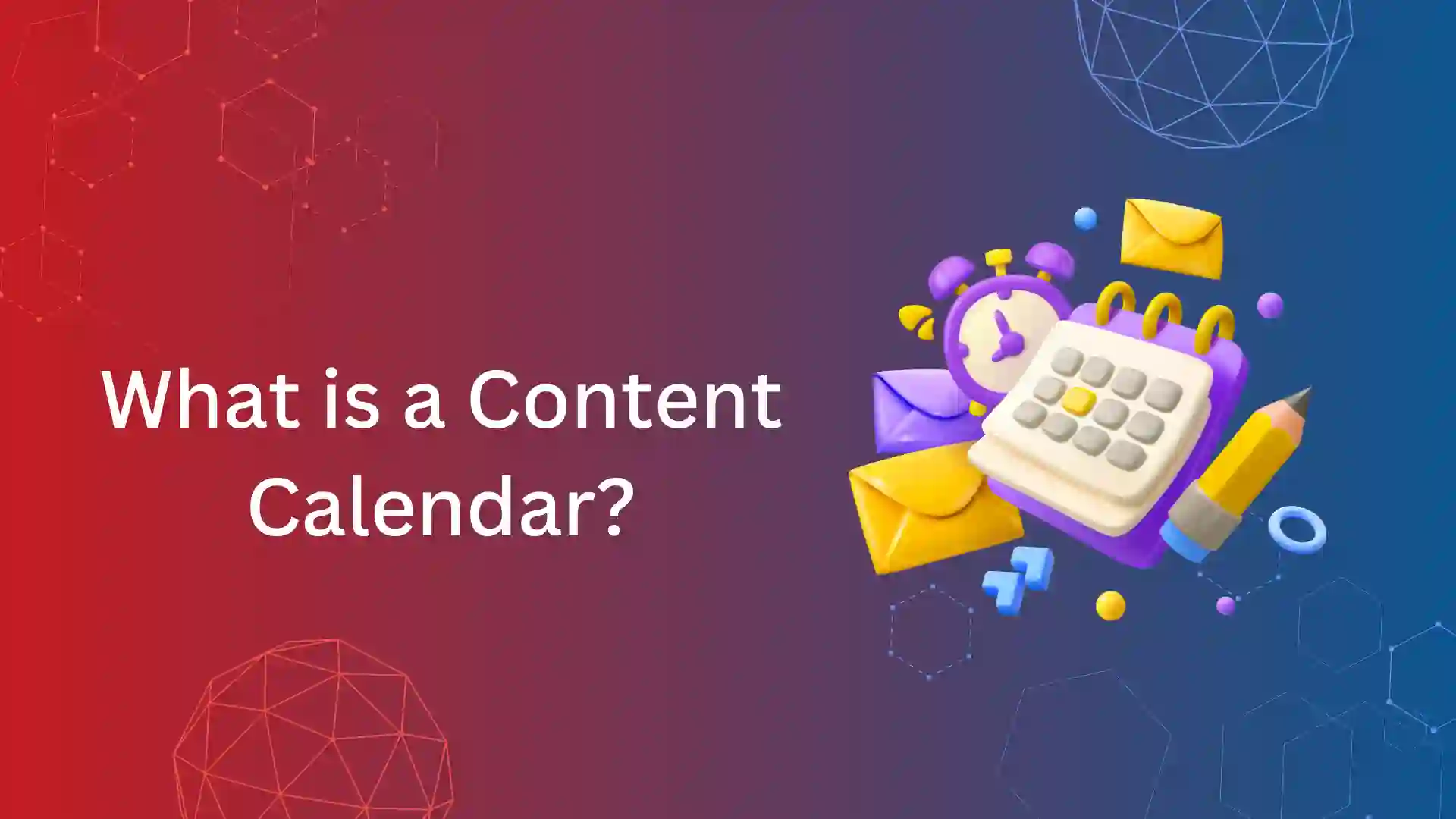Family law is one of the most competitive fields in law, and the number of family lawyers keeps increasing every year. There are several people who look for quality family lawyers on the Internet to help them through their tough times.
Search Engine Optimization (SEO) is a process of optimizing your website to rank higher in the search engine results pages (SERPs). SEO lets you increase the visibility of your websites and get more leads and conversions for you.
When it comes to family law, you would mostly aim to rank for terms like “family lawyer,” “family law attorney,” or “divorce lawyer,” or you may use more location-based keywords like “family law attorney near me.”
Whatever keywords you aim to rank for, you can never rank higher in your search results if you don’t optimize your website. Continue reading this article to learn more about SEO for family law attorneys and divorce lawyers, and understand the steps you need to follow to optimize your website for search engines.
Why Do Family Lawyers Need SEO Services?
Each day, more and more clients turn to Google to search for a quality and reliable family law firm they can consult to solve their legal issues. Before choosing a law firm, they consider many factors, like the quality of the firm, its location, the education level of the lawyers, and the cost of the consultation.
In such a scenario, creating and optimizing a website for your clients can greatly benefit you and your law firm. Below are some benefits you can get by optimizing your family law firm websites for search engines.
1. Get more organic website traffic
Instead of spending loads of money on advertising your law firm websites to get traffic for your website, you can implement effective SEO strategies that can get you more qualified, organic traffic. You can acquire clients who are actually in need of your services.
2. Beat your competitors and capture their website’s traffic
In search engines, your competitors are those who rank above you for the keywords you aim to rank for. By making the necessary changes to your website and improving its performance, you can get new traffic and also capture the traffic that your competitors have for your website.
3. Increase monthly leads and client appointments
Through SEO, family lawyers can get more organic website traffic and generate quality leads. These leads can go through your website, and if they find it helpful, they might reach out to you for consultations.
4. Builds authority for the websites
Search engines rank websites based on how relevant and helpful they are to the user’s search query. When you get to rank your website on the first page of the search result, or even in the first rank (featured snippet), you automatically gain the trust of your clients that you are an expert in your field.
This is because it is a popular belief that Google only ranks brands and businesses that are of the highest quality and have established a name for themselves in their field.
What Are the SEO strategies for Website Optimization for Family Lawyers?
SEO is an elaborate and complex process that takes time to show results. It aims for long-term growth and gives your website the boost it needs to rank higher in the search engines.
Here are the steps that are to be followed when optimizing your websites for search engines.
1. Understand and sort out the services you provide
You should first understand and list out all the services you provide before starting to optimize your website. This can help you decide on the number of web pages you may need to create for your website.
As a family law attorney, the services you provide would be
- divorce mediation,
- divorce litigation,
- child custody,
- child support,
- matrimonial support,
- property settlements, etc.
Having an idea about all the services provided can also help you determine the keywords you need to focus on while drafting the content for each web page. You can use these keywords on your website’s home page and increase your chances of ranking in Google.
2. Create a website with a separate webpage for each service
Once you have listed the various services you provide, start working on creating a website for your law firm. A website is a must for any type of business because it is where the users learn about your services.
Create separate web pages for each service or however much you feel necessary. The main reason behind creating separate web pages for each service is to provide sufficient information regarding each service. Your potential clients learn more about each service and decide whether they want to consult you or not.
3. Set up a Google Business Profile
Google Business Profile (GBP) is the updated version of Google My Business (GMB). It is a free business listing from Google that allows businesses to increase their visibility by appearing on all Google services like Google searches, Google Maps, and others.
GBP has many features that can make your law firm website appear in front of your clients when they search for them online. You need to list your law firm’s services in GBP to fully leverage all the benefits of SEO.
While setting up your business profile, you can add as much information like the services you provide, your contact details, your firm’s location, images, videos, client reviews, etc. All these are done for your prospects to find relevant information from your profile and visit you for consultation.
4. Conduct SEO audit
Technical SEO audits are very important to analyze the performance of your website. They are performed to identify which web pages perform well and which need improvement. They are mainly focused on enhancing user experience.
Through an SEO audit, you can analyze various aspects of your website and identify where it is lacking and what hinders it from ranking on the SERP.
Some aspects of the web page that undergo SEO audit are
- site speed,
- page loading speed,
- web page indexing,
- responsiveness,
- hosting features,
- mobile friendliness, etc.
Get the perfect results from SEO audits by conducting them using tools like SEMrush, Google Search Console, Ahrefs, Screaming Frog, etc.
5. Understand your competitors
No matter what field your business is in, competition is inevitable. This is the same even in online platforms. The websites of the law firms that rank higher than you in the search results are your competitors.
You should conduct a thorough competitor analysis on these websites. This can help you identify who your main competitors are and what marketing strategies they follow to reach their audience.
To conduct a competitor analysis for maximum information, you should first clarify what position you hold in the current marketplace compared to your competitors.
Conducting a competitor analysis on your competitors can help you
- identify new opportunities to further improve your website,
- identify your competitor’s strengths and weaknesses,
- understand the strategies they use to reach their audience, and
- create new successful strategies based on their strategies.
6. Keyword research
A keyword may be a single word or phrase that the users use to search for something on the search engines. Google is designed to provide its users with the most relevant and helpful content for what they are searching.
As such, you should let Google understand that your content is related to what the users are searching for to rank on the search results.
Doing keyword research can help you with it. Conduct in-depth keyword research and find out what words or phrases the users use to search for you or your law firm. Use these keywords while creating content for the website. This can make ranking much easier.
Focus more on local keywords and identify how people near your location search for you. You can use these geo-targeted keywords to rank on the search results of people near you.
7. Develop content structure
The next step after competitor analysis and keyword research would be developing a content structure for all of your web pages. Structure the content that you will write on each page to make it easier to read and interpret for both search engines and users.
This allows Google to easily crawl your web pages and rank them higher than your competitors. Structured content can also make it easier for visitors to discover and comprehend the information you provide. The rank and readability of your content improve as your content structure improves.
8. Create helpful content that meets users’ needs
We have already established above that Google only ranks web pages that provide its users with useful and valuable content. To rank higher in Google, you should create content that meets the needs of the user and provides relevant answers to what they are searching for.
When it comes to content marketing, many people think of blogs. While blogs are important in content marketing, they are not the only type of content that you can aim to create.
You can also create legal content in other formats like
- case studies,
- video content,
- surveys,
- resources,
- webinars,
- any updates in law, etc.
Create as much content on your niche as possible and focus on building authority for your websites. Try to find different types of content or information you can add to the website and keep updating them regularly.
9. On-page components
On-page SEO is what drives a significant number of new visitors to your website. After you’ve completed all of the website optimizations, get started on all the on-page components that can be optimized for maximum results.
On-page SEO is vital for your website since it enables Google to understand what your website is all about and how it can bring value to your consumers. They help optimize the website for both search engine bots and the audience.
Here are some on-page elements that can be optimized to rank higher in the search results.
HTML Meta Tags
- Title tag
- Meta description
- Headers (H1)
- Subheaders (H2, H3, etc.)
- Robots. Tag
- Canonical URL
Uniform Resource Locator (URL)
The URL is the address of any website. The keywords you place in them are one of the Google’s ranking factors.
Image optimization
- The images should be less than 100kb.
- Use Alt text for images that hold keywords.
- The image should be in WebP or AVIF formats.
Links
Keep internal links (links to other webpages of your website) and external links (links from other relevant websites) to share the authority of your website.
10. Link-building strategy
Backlinks are one of the Google’s ranking factors. Brands use them to build authority for their websites. You may rank better on search engines if you have more authority in your niche (in your case, “family law firm”). Backlinks can get you organic traffic and increase conversion rates for your websites.
Here are some ways you can build links for a website.
- Guest posts
- Directories
- Listicles
- Press Release (PR)
- Help a Reporter Out (HARO)
Just because you wish to build backlinks for your website doesn’t imply you can get them from any unknown website. You need to consider some factors before choosing a backlink for your website. Below are Google webmaster guidelines for choosing a backlink for your website:
- Choose a relevant website for your niche.
- Its organic traffic should be more than 1000 per month.
- It should receive organic traffic for keywords related to your industry.
- Its relevant domains must be higher than outbound domains.
- It should not take part in link scheme.
- Its organic traffic and referring domains should not be falling simultaneously.
11. Ensure the web page gets indexed
So far, all the optimizations you can do on your websites are done. The next step is to ensure that Google indexes each of your web pages. Only when Google indexes a web page can it be found by the users.
Here’s the process of how Google indexes a web page.
- Crawling: Google bots crawl the web pages to scan and assess the relevancy of the content.
- Indexing: Google analyzes and stores the web pages in its database.
- Ranking: Google algorithm searches for and chooses the web pages most relevant to the user’s search intent from the database.
12. Work on fixing core web vitals
After your web pages are indexed, begin working on fixing the Core Web Vitals. Core Web Vitals are a metric used to measure a web page experience on both mobile and desktop devices.
Three attributes are used to measure the Core Web Vitals of a web page.
- Largest Contentful Paint (LCP), which assesses a web page’s loading speed
- First Input Delay (FID), which measures the user’s interaction with the web page
- Cumulative Layout Shift (CLS), which measures the visual stability of the web page
These three metrics are very essential for enhanced user experience. So, ensure you optimize your website for these three factors to get ranked higher in search results and give your users the best page experience.
13. Analyze the website’s performance
SEO isn’t over unless you assess and enhance the website’s performance. Now that all of the optimizations have been performed, the next step is to examine and monitor the performance of your website.
There are hundreds of tools you can use to assess the success of your website. The Google algorithm employs over 200 ranking variables to place a website on the top page.
You may measure these parameters using various tools available online. These tools differ in terms of their functionality and what you require them for.
Some of the aspects that you need to analyze in regard to the performance of a website are
- organic traffic,
- keyword ranking,
- SERP visibility,
- CTR Click-Through Rate,
- bounce Rate,
- website authority over time,
- backlinks,
- page speed,
- time spent on page, and
- conversion rate.
SEO is a never-ending process; you need to optimize them regularly to get the best results. You need to improve your website repeatedly until it appears in the featured snippets.
14. Develop new strategies using the previous analysis reports
Once you’ve performed all the essential changes and your website gets ranked on the first page or even the featured snippets, use the same method to create more web pages.
Create new optimization techniques based on prior analyses and optimize them regularly for the best outcomes. Repeat this process until each page appears in the search results.
We are one such SEO agency that deploys rapid experimentations with the help of data from Google search console and other SEO tools to build strategies.
Besides this, we will focus on the keyword position since the strategy is initiated. This help us to build the proven or winning strategies for our clients.
Conclusion
Getting ranked and appearing on the first page of the search results may not be an overnight fix, but it will definitely give you the desired results if you are consistent and optimize your web pages regularly.
The above steps will help you optimize your website and get ranked in the search engines.
Above all, it’s necessary to choose an SEO expert or an SEO agency with ample of experience in handling law attorneys websites or business.
FAQ
Search Engine Optimization (SEO) is optimizing your website to rank higher in the search engine results pages (SERPs). SEO lets you increase the visibility of your websites and get more leads and conversions for you.
When it comes to family law, you would mostly aim to rank for terms like “family lawyer,” “family law attorney,” and “divorce lawyer,” or you may use more location-based keywords like “family law attorney near me.” Optimizing your websites for search engines can help you rank for these keywords.
Nowadays, most people prefer using the Internet to search for family law firms near them instead of asking others for help. They will also only visit lawyers who rank higher in search results. This is because people believe that Google will only rank those who are experts in their field.
So, lawyers need to get online and use SEO tactics to optimize their websites and appear in front of their target audience.
Digital marketing allows lawyers to reach out and connect with their existing and potential clients online. They can target them on platforms that their audience frequently uses to market their services.
They can also use marketing to promote their services by publishing blogs or newsletters to create awareness and inform their audience about any updates in family law.













